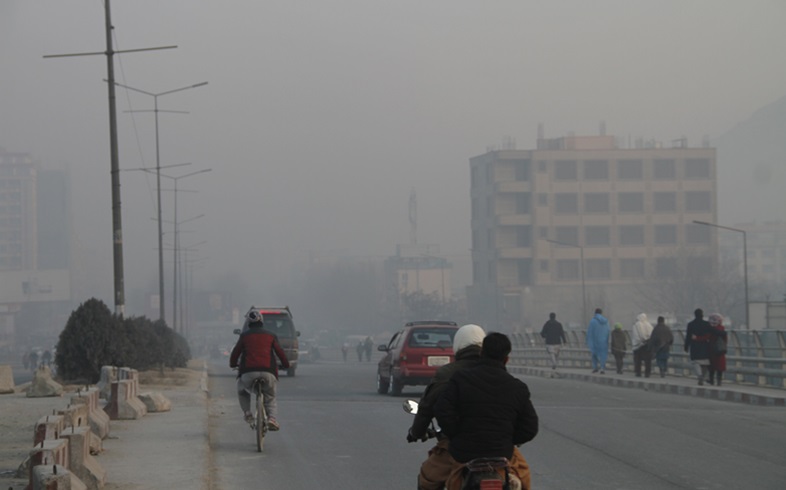Winter has arrived again, and breathing the air of “beautiful Kabul” now feels like inhaling a deadly poison that threatens to push millions of this city’s residents toward death and destruction. Kabul, the capital of Afghanistan, has faced a severe air pollution crisis in recent years. This situation not only poses a serious threat to public health but has also become one of the country’s greatest environmental and health challenges.
The seasonal intensification of air pollution in Kabul is caused by multiple factors. The use of substandard fuels, such as low-quality oils, coal, wood, and poor fuel materials in vehicles, residential homes, bathhouses, bakeries, and industrial workshops, stems from the lack of affordable and suitable energy options. Additionally, the presence of a large number of outdated, smoke-emitting vehicles that lack environmental standards introduces massive volumes of toxic gases into the city’s air every day, significantly worsening air pollution. Furthermore, poor waste management, including the burning of garbage and plastic materials in residential areas, is another contributor to the increase in air pollutants. Unregulated construction activities and the dust generated from these projects also play a significant role in polluting the air.
The consequences of air pollution on public health are extremely severe and dangerous. The increase in respiratory diseases such as asthma and bronchitis, exacerbation of cardiovascular diseases, rising mortality rates due to heart attacks and strokes, eye and skin diseases caused by airborne particulates, and the negative effects on children and the elderly as vulnerable groups are among the grave impacts that air pollution leaves on the lives and health of citizens.
According to published reports, air pollution levels in Kabul rise dramatically during the winter season. The air quality index in the city has repeatedly reached dangerous levels, and on some days, Kabul ranks among the most polluted cities in the world.
Therefore, the following measures are essential as proposed solutions to address the air pollution crisis in Kabul:
- Providing clean and affordable fuel to citizens, especially during winter.
- Modernizing and standardizing public transportation and banning outdated vehicles from the roads.
- Promoting the use of renewable energy, such as solar power.
- Increasing oversight of waste management and preventing the burning of plastic materials.
- Expanding urban green spaces and planting trees to improve air quality.
In conclusion, it can be said that the air pollution situation in Kabul is a serious and urgent crisis requiring comprehensive attention and collaboration from the government, international organizations, and citizens. The health of millions is at risk, and without effective measures, the consequences of this catastrophe could become irreparable in the coming years.











Read More
The Lions of Khorasan Crowned Champions After a Historic Humiliation of Iran
Afghanistan’s U-17 Futsal Team Advances to the Final After Crushing Thailand
The Impact of U.S. Aid Cuts to Afghanistan